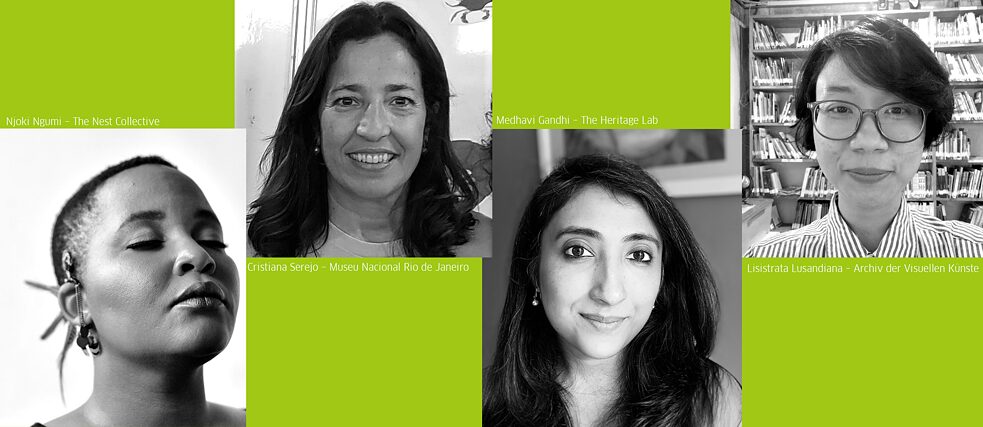“Hack Your Culture”
Show Me Your Collection

For “Hack Your Culture” by the Goethe-Institut, three representatives of cultural institutions in Brazil, Indonesia and Kenya met to discuss digital challenges.
By Tânia Caliari
In early November 2020, representatives from three museums and archives in Brazil, Indonesia and Kenya came together as part of the “Hack Your Culture” hackathon organised by the Goethe-Instituts in Brazil, Indonesia and South Africa to talk about digital transformation and cultural heritage in the global south. It became clear that the process of digitising collections and the creation of virtual audience formats in the museum sector were propelled during the Covid-19 pandemic, offering great potential for interaction between the institutions and their visitors.
Moderator Medhavi Gandhi of the Heritage Lab India turned the discussion to the Covid-19 pandemic at the very start. “When we were hit by the pandemic, in the first few weeks there were no cultural events taking place. As time passed, we were forced to have strategies to cope with the situation. It reminded us that creating events online could be much more affordable, easier and faster,” said Lisistrata Lusandiana, director of the Indonesian Visual Art Archive.
Not everyone has access to the Internet
Cristiana Serejo, deputy director of the Museu Nacional in Rio de Janeiro, confirmed that the pandemic is an opportunity to advance the digitisation process. She noted: “In June 2020, the Museu Nacional celebrated its 202nd anniversary. Our staff decided to create short, informative videos for this. But initially nobody knew how to shoot and edit videos. That was a big challenge and I think we learned a lot from it.”Njoki Ngumi from The Nest Collective in Kenya emphasised that the restrictions in social life demonstrated that not everyone has access to the Internet, although it should be a universal human right. She advocated going beyond the forms of digital interaction that became established during the pandemic and trying to offer more complete virtual experiences, for example using virtual reality.
What people are really interested in
When asked what had priority for them and their institutions with regard to digital transformation, the participants unanimously stated that the expansion of digital infrastructure and digital skills were fundamental. “I think these two factors are required for expanding access to cultural heritage,” said Njoki Ngumi. In addition, digitisation opens up the possibility of getting to know the museum public using digital data. As an example, Ngumi added that most search engine queries in Kenya were on the subjects such as sports and sex. “Which museum has done an interesting sports engagement? You can do an exhibition about sex that is family friendly. I think that beginning with the data and then asking ourselves what are people really interested in and how to plug into that is a way of aligning our interests and our lives.”For Cristiana Serejo from Brazil’s Museu Nacional, which was destroyed by a devastating fire in 2018, digital offerings also promote the audience’s sense of belonging. “I believe it’s necessary to make people feel that they belong to this museum,” she said. Lusandiana agreed and emphasised that cultural institutions seemed very far away for many people and that digital media could bring them closer. In addition, making collections accessible via the Internet offers scholars, researchers and interested parties worldwide the opportunity to interact with the data.
Decolonisation of institutions
Ngumi added that in countries with a colonial past, the people’s relationship to the museums of the colonisers was something “inherited.” Direct interaction with the cultural institutions through simplified digital access enables people to reshape this relationship. On the subject of the decolonisation of institutions, Serejo added that the digitisation of collections would make it possible to bring objects from Brazilian culture scattered around the world together with objects from the museum’s own collection.After the major fire of 2018, in which the collection of the Museu Nacional was almost completely lost, many donations from the indigenous population of Brazil reached the museum in order to rebuild the collection. Digital platforms also played a central role in this. “It is fascinating to see how the indigenous communities teamed up with our scientific team to restore, at least in part, the collection of the Museu Nacional,” said Serejo. “This is a completely different process than at the time of Portuguese colonisation.”